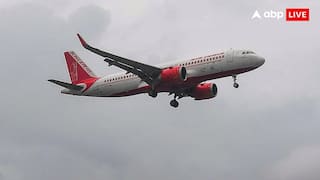Aditya-L1 Will Be Placed 1.5 Million Kilometres From The Earth. Know The Significance Of This Distance
Aditya-L1: About 120 days after launch, Aditya-L1 will reach a halo orbit around a special point in space, called Lagrange Point 1 (L1), in January 2024. L1 lies along the Sun-Earth line.

Aditya-L1, India’s first space-based solar observatory to study the Sun, will be launched into space on September 2, 2023, and will reach its destination four months from launch. The spacecraft will be launched atop an XL-PSLV (Polar Satellite Launch Vehicle) rocket, from Satish Dhawan Space Centre, Sriharikota, Andhra Pradesh, at 11:50 am IST on September 2. About 120 days later, in January 2024, Aditya-L1 will reach a halo orbit around a special point in space, called Lagrange Point 1 (L1).
L1 lies along the Sun-Earth line, and is located 1.5 million kilometres from Earth.
MUST READ | Aditya-L1: What Makes India's First Space-Based Solar Observatory To Study The Sun Unique
Why is Aditya-L1 being placed around a Lagrange point?
Lagrange points are special positions in space which allow a spacecraft to save fuel because the gravitational pulls of large masses act in such a way that they become balanced, and cause the spacecraft to stay in a fixed position. Since Aditya-L1 will be placed in a halo orbit around L1, not only will the observatory be able to conserve energy and remain fixed in the orbit, but will also obtain an uninterrupted view of the Sun, throughout the entirety of its mission life. This is because at L1, no eclipses or occultations occur.
An astronomical occultation is a phenomenon in which light from a planetary body is completely obstructed by another celestial object, such as a star or a planet. In a solar eclipse, the Moon comes in between the Sun and the Earth, and during a lunar eclipse, the Earth comes in between the Sun and the Moon. Therefore, total solar and total lunar eclipses are occultations of the Sun and the Moon by the Moon and the Earth, respectively. All total eclipses are occultations, but all occultations are not eclipses.
Since the Lagrange point is devoid of eclipses or occultations, Aditya-L1 can perform scientific experiments continuously for five years, without any obstruction.
ALSO READ | Everything About Aditya-L1
What is the significance of the 1.5 million-kilometre distance?
The distance between the Sun and the Earth is about 150 million kilometres, and that between the Aditya-L1 spacecraft and the Earth will be 1.5 million kilometres. This means that the distance between Aditya-L1 and the Sun will be about 148.5 million kilometres.
The Indian Space Research Organisation (ISRO) chose 1.5 million kilometres as the distance between Aditya-L1 and the Earth after careful consideration.
“The distance of 1.5 million kilometres for Aditya-L1 holds immense significance in its mission to study the Sun. Placing Aditya-L1 at this specific distance is a carefully considered choice that offers several key advantages,” Manish Purohit, a former ISRO scientist who was involved in the Chandrayaan-2 and Mangalyaan missions, told ABP Live.
There are two reasons behind this. As explained above, the halo orbit around L1 will allow Aditya-L1 to enjoy an uninterrupted view of the Sun for its entire mission life.
“This unobstructed line of sight allows the spacecraft to continuously observe and collect data on various solar processes without being hindered by Earth's shadow, which can cause eclipses and disrupt observations,” said Purohit.
MUST READ: EXCLUSIVE | Chandrayaan-3 Is A 'Huge Confidence Booster', Can Help Reverse Brain Drain, CERN Scientist Archana Sharma Says
The second advantage of L1 is that it offers a unique gravitational balance between the Earth and the Sun. Since the gravitational forces of the Earth and the Sun cancel each other out, Aditya-L1 will be able to maintain a stable position with low energy expenditure. In other words, an equilibrium is maintained.
“The gravitational forces from both bodies effectively cancel each other out at this point, allowing a spacecraft to maintain a relatively stable position with minimal energy expenditure. This equilibrium makes it easier to keep Aditya-L1 in a stable halo orbit around the L1 point,” said Purohit.
ALSO READ | Chandrayaan, Apollo, Artemis, Luna – Successful Moon Missions Launched Till Date
The gravitational force experienced by Aditya-L1 due to the Earth will decrease as it moves away from the planet. However, if it comes too close to the Sun, the gravitational force experienced by the spacecraft due to the solar system’s star will increase. Therefore, L1 is a special point where the spacecraft will be in an equilibrium position, and experience net-zero gravity. This will ensure that Aditya-L1 requires the least amount of fuel to continuously view the Sun.
“As the spacecraft propels away from Earth’s surface closer to the Sun, the gravitational force experienced due to the Earth reduces and the force experienced due to the Sun increases. At L1, which is 1.5 million kilometres away from the Earth’s surface, the spacecraft will be in an equilibrium position, experiencing zero net gravity. Hence, Aditya-L1 will need the least amount of fuel to continuously view the Sun from the L1,” said Debadatta Mishra, a former ISRO scientist and co-founder of Erisha Space, a New Delhi-based space-tech firm.
How will Aditya-L1 study the Sun if it is located about 148.5 million kilometres from the star?
Aditya-L1’s distance from the Sun will be far relative to the distance between the spacecraft and the Earth. Despite this, Aditya-L1’s advanced instruments are expected to conduct multi-spectral observations by studying the radiations from the Sun in visible, ultraviolet and X-ray wavelengths, said Purohit. “This multi-spectral approach enables scientists to gain insights into different layers of the Sun's atmosphere and the intricate processes occurring within them.”
Another important point to note is that the distance between Aditya-L1 and the Sun will not negatively affect the spacecraft’s ability to study high-energy particles originating from the Sun. High-energy particles emitted by the Sun include protons and electrons. These particles can give scientists important information about the dynamic behaviour of the Sun, Purohit explained. “Aditya-L1's instruments are adept at capturing and analysing these particles, providing a deeper understanding of their origins and potential impact on space weather.”
Aditya-L1 will carry seven payloads, which are of two types. Four instruments are remote sensing payloads, and three are in-situ payloads.
The four remote sensing payloads are: Visible Emission Line Coronagraph (VELC), Solar Ultraviolet Imaging Telescope (SUIT), Solar Low-Energy X-ray Spectrometer (SoLEXS), and High Energy L1 Orbiting X-ray Spectrometer (HEL1OS).
The three in-situ payloads are: Aditya Solar wind Particle Experiment (ASPEX), Plasma Analyser Package For Aditya (PAPA), and Advanced Tri-axial High Resolution Digital Magnetometers.
ALSO READ | Soft Landing To Trans-Lunar Orbit: Chandrayaan-3 Jargons Explained
The magnetometers will study the magnetic fields at the Lagrange point, in order to understand how solar activities affect the magnetic fields in the interplanetary medium. The observations made by the magnetometers will help scientists understand intricate details behind different solar phenomena such as sunspots, flares, and coronal mass ejections.
“One of the key features of Aditya-L1's instrumentation are its magnetometers. The magnetometers will be utilised to monitor the magnetic field at the L1. By observing the Sun's magnetic field variations, scientists can uncover critical details about solar phenomena like sunspots, flares, and coronal mass ejections, which have significant implications for Earth's space environment,” said Purohit.
The advanced instruments onboard Aditya-L1 can effectively perform measurements of the solar atmosphere, and radiation emitted by the in different wavelengths, despite the large distance between the Sun and the spacecraft, according to Mishra. “Since the particles emitted by the Sun are very high in energy, the large distance between the spacecraft and the Sun is not a matter of concern. Rather, it provides a more comprehensive view of the solar atmosphere and its radiation.”







































